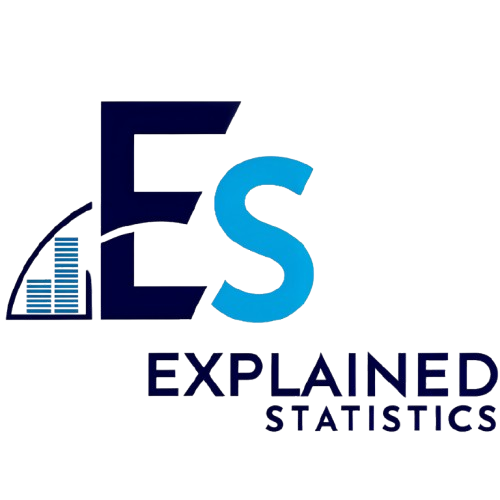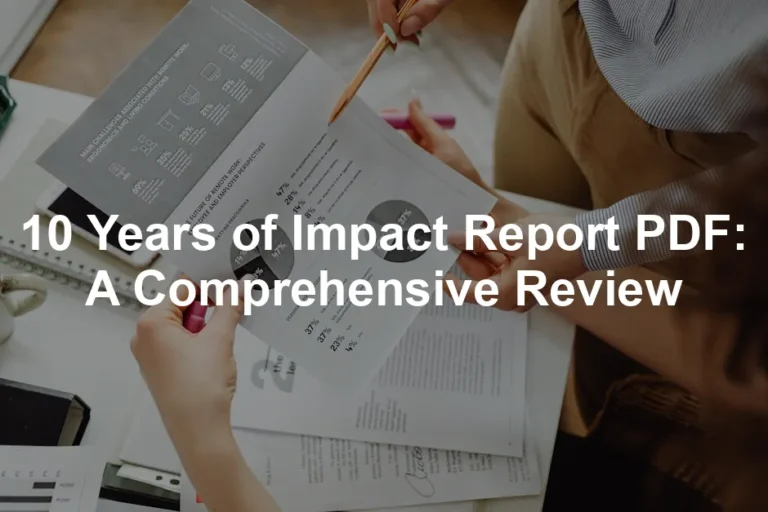Introduction
Statistics is everywhere! From analyzing data trends in business to predicting health outcomes in medicine, the importance of statistics is undeniable. In today’s world, where data drives decisions, having a solid grasp of statistical principles is vital. This knowledge allows professionals across industries to make informed choices, optimize processes, and solve complex problems.
As we shift into a more data-driven economy, the demand for individuals skilled in statistics is skyrocketing. Employers are on the lookout for graduates who can interpret data, manage analytics, and derive insights from numbers. Whether it’s healthcare firms needing data analysts or tech companies requiring data scientists, the opportunities are vast and varied.
This article aims to be your ultimate guide to the best colleges for studying statistics. We’ll cover top-ranked programs, unique features of each school, and what you can expect when pursuing a degree in this critical field. If you’re considering a future where you can turn data into actionable insights, read on to discover the best institutions to nurture your statistical prowess!
Overview of Statistics Programs
Statistics plays a crucial role in modern society, shaping industries from finance to healthcare, and even social sciences. Graduates with a statistics degree have a wealth of career options. You might find yourself working as a data analyst, statistician, or even an actuarial scientist. The versatility of a statistics degree is a significant draw for many students.
There are several paths to obtaining a degree in statistics. You can start with an Associate degree, which provides foundational knowledge. However, most students pursue a Bachelor’s degree in Statistics or Mathematics. For those looking to specialize further, Master’s and Doctoral programs offer advanced courses and research opportunities.
If you’re curious to dive deeper into the world of data, consider picking up “The Art of Statistics: Learning from Data” by David Spiegelhalter. This book provides a delightful journey through the principles of statistics, helping you grasp the importance of data analysis in making informed decisions!
Accreditation is another critical factor to consider when choosing a program. Attending an accredited institution ensures that the education you receive meets specific quality standards, making you more competitive in the job market. Additionally, program reputation can significantly influence your career trajectory, as employers often look for graduates from well-regarded schools.

Types of Statistics Degrees
Undergraduate Programs
When it comes to undergraduate statistics programs, you’ll typically encounter two main types: Bachelor of Science (BS) and Bachelor of Arts (BA) in Statistics. A BS usually emphasizes quantitative skills and is often more technical, incorporating extensive coursework in mathematics and computer science. In contrast, a BA may offer a broader liberal arts education, providing flexibility for students to explore diverse interests while still covering essential statistical concepts.
Regardless of the degree type, foundational courses in calculus, linear algebra, and statistics are critical. These courses equip students with the necessary skills to analyze data effectively and interpret results accurately, preparing them for a successful career in statistics.
For those looking to break into the world of statistics, consider grabbing a copy of “Naked Statistics: Stripping the Dread from the Data” by Charles Wheelan. This book is the perfect antidote to all your statistical fears, making complex concepts accessible and enjoyable!
Graduate Programs
For those keen on advancing their education, both Master’s and Doctoral programs are available. Master’s degrees often focus on specialized areas such as biostatistics, data science, or applied statistics. These programs delve deeper into topics, providing practical experience through projects and internships.
On the other hand, pursuing a Ph.D. in Statistics opens doors to research and academic roles. Doctoral programs typically involve rigorous coursework and a dissertation that contributes new knowledge to the field. Advanced topics like statistical modeling, machine learning, and experimental design are common, ensuring graduates are well-prepared for the complexities of modern statistical analysis.
If you’re interested in practical applications of statistics, you might want to check out “Practical Statistics for Data Scientists: 50 Essential Concepts” by Peter Bruce and Andrew Bruce. This book is a must-have for anyone looking to blend data science with statistical analysis!
In summary, whether you aim for an undergraduate or graduate degree, a solid foundation in mathematics and statistics is essential. The landscape of opportunities is vast, making the pursuit of a statistics degree an excellent choice for aspiring data professionals.

Top Colleges for Statistics
Finding the right college for statistics isn’t just about numbers—though, let’s be honest, numbers are important! Here’s a rundown of some of the best colleges for studying statistics. Each entry includes key details like location, acceptance rates, tuition, and unique offerings that make these institutions stand out.
1. Harvard University
Located in Cambridge, MA, Harvard University boasts an acceptance rate of just 3%. The SAT scores typically range between 1490 and 1580, making it a challenging admission process. Students enjoy a wealth of research opportunities, particularly in data science and quantitative methods, alongside notable faculty members who are leaders in the field. Harvard’s commitment to interdisciplinary studies allows students to explore various applications of statistics, enriching their learning experience. With a net price of around $19,491, it’s a hefty investment, but one that pays off with significant career prospects.

2. Stanford University
Stanford University, nestled in Stanford, CA, ranks as one of the top statistics programs with an acceptance rate of 4%. Known for its vibrant campus culture, Stanford encourages collaboration and innovation. SAT scores average between 1490 and 1570, attracting some of the brightest minds. The university emphasizes data science, offering extensive resources, including cutting-edge labs and research centers. Tuition costs average around $15,133. Students praise the diverse course offerings and the opportunity to engage in groundbreaking research.
3. University of California – Berkeley
The University of California – Berkeley is located in Berkeley, CA, and ranks second in statistics programs nationally. With an acceptance rate of 11%, it attracts a competitive applicant pool. The SAT scores typically range from 1310 to 1530. Berkeley’s statistics program is highly regarded for its rigorous curriculum and research opportunities, particularly in biostatistics. Notable alumni include Nobel laureates and prominent data scientists. The net price is approximately $19,257, and students enjoy a rich campus life filled with academic and social activities.

4. University of Chicago
In the windy city of Chicago, IL, the University of Chicago also ties for third in statistics rankings. Its acceptance rate stands at 5%, with SAT scores ranging from 1500 to 1580. The university is renowned for its interdisciplinary approach, integrating economics, social sciences, and statistical methods. Students can specialize in various fields, enhancing their employment prospects. Tuition averages $36,991, and the strong emphasis on research prepares graduates for roles in academia and industry.
5. Duke University
Duke University, located in Durham, NC, has an acceptance rate of 6%. With SAT scores averaging between 1450 and 1570, it offers a competitive environment. Duke’s statistics program stands out due to its strong focus on practical applications, including internships and real-world projects. The campus life is lively, with numerous student organizations and activities that foster community engagement. The net price is about $23,694, making it a valuable investment for aspiring statisticians.

6. Carnegie Mellon University
Carnegie Mellon University in Pittsburgh, PA, ranks fifth in statistics, with an acceptance rate of 11%. SAT scores range from 1490 to 1570. Known for its emphasis on computational statistics and data science, Carnegie Mellon offers unique programs that blend theory with application. Students can engage in research projects and internships that provide hands-on experience. The average tuition is approximately $33,499, a price justified by the university’s strong connections to the tech industry.
7. University of Michigan – Ann Arbor
The University of Michigan – Ann Arbor is a top choice for statistics enthusiasts, located in Ann Arbor, MI. With an acceptance rate of 18%, it provides a welcoming environment for diverse students. SAT scores typically range from 1350 to 1530. The statistics program is noted for its research initiatives and collaborative projects across various disciplines. The net price is around $19,318, and students appreciate the active campus life and numerous resources available for academic support.

8. Johns Hopkins University
Situated in Baltimore, MD, Johns Hopkins University is celebrated for its strong emphasis on biostatistics and public health. The acceptance rate is 7%, and students typically score between 1545 and 1580 on the SAT. The university’s statistics program ranks highly due to its research opportunities, particularly in healthcare applications. With a net price of approximately $24,034, students gain access to top-tier resources and faculty expertise that significantly enhance their educational experience.
9. University of Pennsylvania
The University of Pennsylvania, located in Philadelphia, PA, has an acceptance rate of 7%. SAT scores range from 1420 to 1550, drawing in talented applicants. UPenn’s interdisciplinary programs allow students to combine statistics with various fields, preparing them for diverse careers. The program is known for its strong alumni network and career support services. With an average net price of $26,123, it’s a worthwhile investment for those serious about statistics.

10. Columbia University
Columbia University in New York, NY, rounds out our list with an acceptance rate of 4%. SAT scores generally fall between 1490 and 1580. The university’s urban campus provides unique networking opportunities and access to a diverse range of industries. Columbia’s statistics program emphasizes practical applications, preparing students for roles in data science and analytics. The tuition averages around $59,430, reflecting the prestigious education and resources available to students.
These colleges represent some of the best opportunities for aspiring statisticians. Each school offers unique strengths, research opportunities, and resources to prepare students for successful careers in an increasingly data-driven world. Choose wisely, and you might just find yourself crunching numbers at one of these prestigious institutions!

Factors to Consider When Choosing a College
Choosing a college for your statistics degree can feel overwhelming, but focusing on key factors can simplify the process. Start with acceptance rates. Colleges with lower acceptance rates often indicate higher competition. Understanding a program’s strengths is crucial. Research faculty expertise, curriculum focus, and available specializations, as these will shape your learning experience.
Financial aid is another critical aspect. Be sure to explore available scholarships, grants, and work-study opportunities that can ease the cost of education. Campus culture also matters. Consider whether you prefer a lively urban environment or a quieter campus setting, as this can significantly impact your college experience.
Job placement rates provide insight into how successful graduates are in securing employment. High placement rates may indicate strong industry connections and effective career services.
If you’re looking to enhance your statistical knowledge, grab a copy of “Statistics for Dummies” by Deborah J. Rumsey. It’s a fantastic resource for those who want to simplify complex statistical concepts and ace their studies!
Visiting campuses is essential. Nothing beats the feel of a college environment. Speak with current students to gain insights into their experiences. Ask about classes, professors, and support systems. This firsthand information can be invaluable.

In summary, take your time to evaluate each aspect. Weighing acceptance rates, program strengths, financial aid options, campus culture, and job placement statistics will help you make an informed choice. Happy college hunting!
Conclusion
Choosing the right college for your statistics degree is crucial. You want an institution that not only ranks high but also fits your personal aspirations and career goals. Statistics is a versatile field, and the best programs offer a mix of solid academic training and practical experience.
While rankings can provide a helpful guide, they shouldn’t be the only factor in your decision. Think about factors like campus culture, faculty expertise, and available resources. Personal fit can significantly enhance your college experience and future career. After all, you’ll be spending several years in this environment, so make sure it aligns with your values and interests.

If you’re looking to understand the impact of predictions and why they sometimes fail, consider reading “The Signal and the Noise: Why So Many Predictions Fail – but Some Don’t” by Nate Silver. This book will sharpen your analytical skills and improve your understanding of statistical reasoning!
In today’s data-driven world, statistics holds immense value. From healthcare to finance, the demand for skilled statisticians continues to grow. A solid education in statistics could lead you to exciting career paths. So take your time, weigh your options, and choose wisely. The right college will help you harness the power of data and make a meaningful impact in your chosen field!
FAQs
What are the best colleges for undergraduate statistics?
When it comes to top-notch undergraduate statistics programs, several colleges stand out. Harvard University in Cambridge, MA, is often regarded as the best overall, with a strong emphasis on research and interdisciplinary studies. Stanford University in California follows closely, renowned for its innovative approach and resources. The University of California, Berkeley, is highly respected for its rigorous curriculum and research opportunities. The University of Chicago also ties for third, offering a unique interdisciplinary approach. Duke University, Carnegie Mellon University, and the University of Michigan – Ann Arbor round out the list of elite choices, each with unique strengths and opportunities for students.
What can I do with a degree in statistics?
A degree in statistics opens doors to various exciting career paths. You could become a data analyst, applying statistical techniques to interpret complex data sets. Biostatistics is another popular option, particularly for those interested in healthcare and public health. Actuarial science is a lucrative career, focusing on risk assessment and financial planning. Additional roles include market research analyst, statistician, and data scientist. The skills you develop can be applied across many industries, making you a valuable asset in today’s job market.
How important are internships in a statistics program?
Internships are vital in statistics programs. They provide hands-on experience that enhances your understanding of theoretical concepts. By working in real-world environments, you can apply your skills, network with professionals, and gain insights into industry practices. Internships often lead to job offers post-graduation, making them a crucial stepping stone in your career. Additionally, they allow you to explore different fields within statistics, helping you refine your interests and career goals.
What are the average salaries for statistics graduates?
Statistics graduates enjoy competitive salaries. On average, starting salaries hover around $56,000. However, this can vary based on location, industry, and experience. For instance, data scientists and actuaries often command higher starting salaries, sometimes exceeding $70,000. With experience, salaries can rise significantly, with many statisticians earning upwards of $90,000 within a few years. The demand for proficient statisticians ensures that graduates can expect solid financial returns on their education.
Are there online programs for statistics degrees?
Yes, many reputable institutions offer online statistics degrees. These programs provide flexibility for students who need to balance work or personal commitments. Online degrees can be just as rigorous as traditional programs, with access to the same quality faculty and resources. When considering an online program, ensure the institution is accredited and has a solid reputation in the field. Many online graduates find success in the job market, proving that distance education can lead to exciting career opportunities.
Please let us know what you think about our content by leaving a comment down below!
Thank you for reading till here 🙂
If you’re interested in exploring career opportunities available with a statistics degree, check out this comprehensive guide on jobs for a statistics degree.
All images from Pexels




